
I’ve been wanting to write a garden update for months and have started a post several times, but there was something about sitting at my computer at home more than I already did, working remotely from mid-March until August, that made me itchy. The restrictions and disruptions of the pandemic certainly impacted my ability to concentrate on writing the blog. You can be sure that I have been working in the garden a lot, both because I had more time and to help keep my sanity, more than any year before, There is plenty to tell you—so much so that I’m going to break up the garden update into installments.
The last garden post was from April, so the spring and summer gardens have come and gone, and it’s winding down for this year. We had a cool spring that was longer than usual, with late frost warnings well into April, the very week after I had planted out my tomato seedlings. June was hot and dry, July and August a bit rainier but still plenty of hot days, and September remained mostly dry.
Peas
Last year was a bonanza of peas. I had enough to eat and to freeze. This year they struggled and never really took off–not even enough for a meal. At our local farmers market I chatted with my egg guy, who said that they had no luck with peas, either, which made me feel better that it wasn’t just my gardening. A disappointment for sure, as they’re one of the early spring vegetables, and ones that are so delicious fresh from the garden that it makes a difference having them right outside the back door. A truly scraggly showing this year. I tried to plant another round for the fall but the birds ate all the seedlings down to the soil line in one feeding session and I gave up for this year.
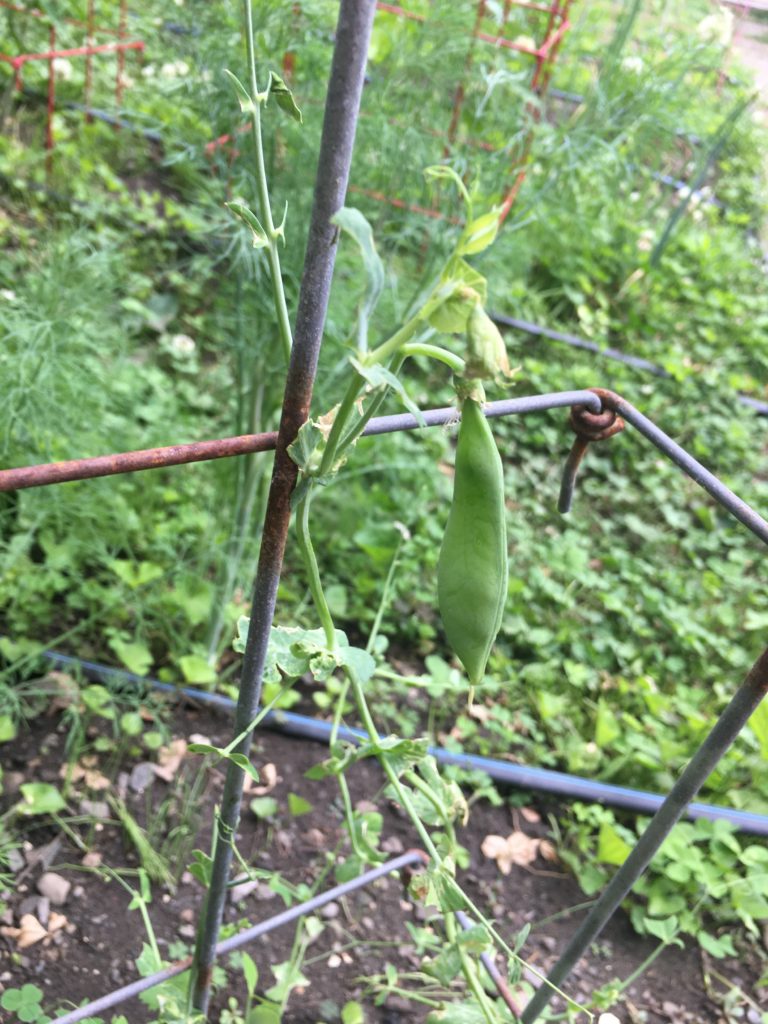
Lettuce
The cool spring made my lettuce greens oh-so happy, as they flourish in cool temperatures and bolt, or go to seed, when it gets hot. I always plant a lot: six heads each of romaine, red leaf, and bibb, plus arugula. I harvest the outer leaves for what I need and the head continues growing until it bolts: then the leaves become bitter and inedible. I pull them all out as this point, although they can be left to flower and go to seed to collect for future planting or to self-sow.
I munched through numerous and enormous salads until the inner stem begin to grow long, which is the signal, and they all started to bolt at the same time in early July. I pulled all 18 heads of lettuce out, washed them, and dropped off huge bags of salad greens to local-area friends. I love salad but even I can’t manage that much at one time! It is one of my garden pleasures to be able to share and, truthfully, I couldn’t possibly manage what comes out of the backyard without doing so.
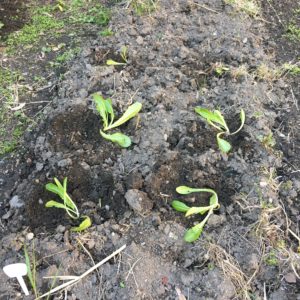

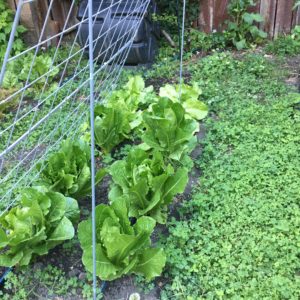
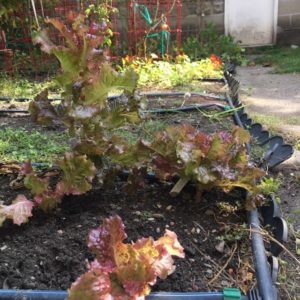
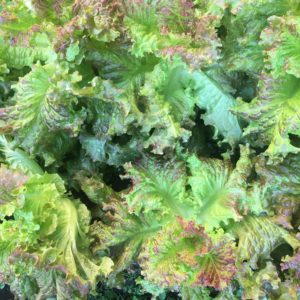
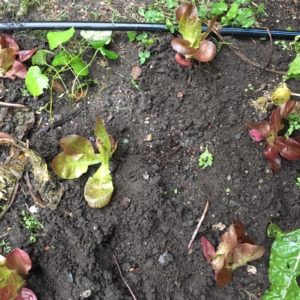
I put in another round mid-summer and most of that has already bolted and been pulled out with the last starting to go now. With the cooler temperatures of the fall, I put in the third round recently, which should keep me in salad until the first frosts. I have them all together in one bed, along with the Swiss chard, so when Jack Frost starts his visits, I can cover them all with garden cloth and keep my growing season going a little longer. After the mid-summer period when I resentfully buy lettuce, I am again happily harvesting the outer leaves and making my salads right from the back yard.

Roots
I always put in one bed of root vegetables: radishes, turnips and beets. These all struggled this year and I’m not sure why, perhaps the heat. The radishes were a bust: it got so hot so fast that the roots didn’t develop at all and they went right to flower. I think I got four radishes in total. They’re usually a very satisfying crop because they produce so quickly but not this year. I plant beets for their greens, not their root, but the tops were sparse this year so not much to use. I’ll pull the roots up in a few weeks, roast them up, and that will be that. If I want beet root during the summer, I get them from my local farmers market. (I didn’t like beets for the longest time until I tried this recipe and I was converted!)
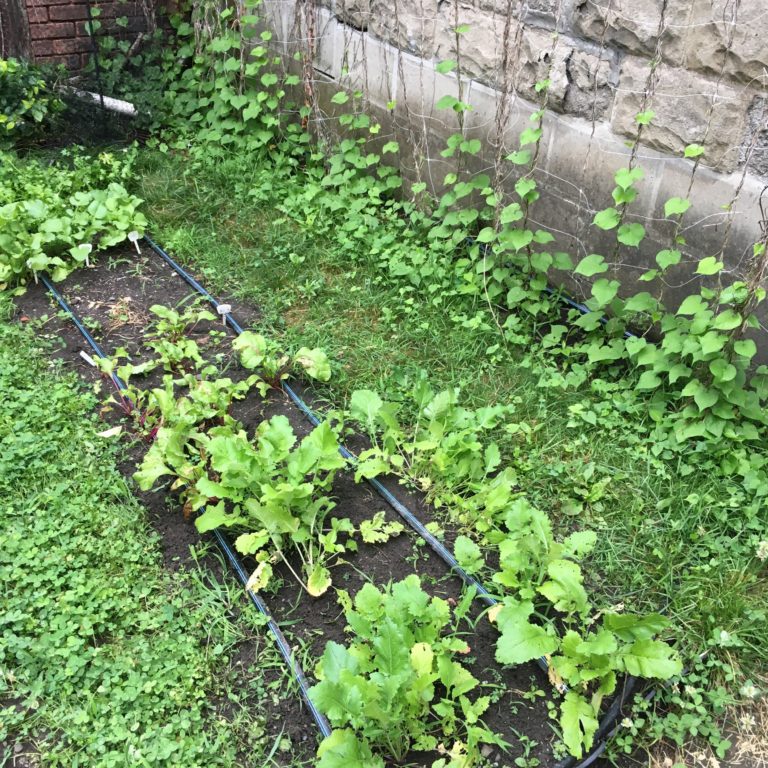

This will be the last year for turnips. When I moved in eight years ago, there was a small garden space in the backyard. My downstairs neighbor, who had lived in her apartment for about 18 years at that point, planted out a few tomato plants that first summer and then pretty much abandoned them. Over that first winter, she and I became friendly and I asked if I could plant some things and she happily turned the entire garden over to me. Her late husband had gardened, and she put in the tomatoes just because she thought she should but had no real interest in it.
She did ask me if I would plant turnips for her because she liked the greens, and I have done so every year at a spot near the path so she could just grab them as she wanted them.
I kept her in other vegetables, too, as well as other treats from the kitchen: part of a pie or cake that I had to try making but couldn’t possibly eat all of it. I had a summer of baseball-bat sized zucchini due to neglect that are only good for zucchini bread, and I made a lot of it. I left a loaf for her and the next time I saw her, she said to me, “I ate that whole cake in a week.” “Not cake,” I said. “Bread. And it had vegetables in it.” “I ate that whole cake in a week,” she repeated. “Really more of a health loaf,” I said. “The whole cake,” she said, shaking her head and laughing.
We had many an early-morning talk while I worked in the garden and she came to the back door, catching up on neighborhood and family news. She was amused by my tendency to make things as difficult as possible and hearing me talk to the plants and insects (“I’m sorry, Mr. Bumble. Let me work over here.”) She died at the end of May and this year’s gardening season just wasn’t quite the same.
Raspberries
Had a banner spring of raspberries, enough that I have gotten four quarts into the freezer. I love raspberries and they’re easy to grow but are fragile and not easy to store as fresh berries. I ate plenty, heaping them up on my cereal. I also love a good hearty bread toasted up, smeared with homemade ricotta (I use Smitten Kitchen’s Homemade Ricotta recipe), sprinkled with toasted sunflower seeds, and topped with fresh berries—so good. (The photo below is with local strawberries but I also do the same with the raspberries.) I had so many I searched out a recipe to bake that would use up a bunch and ended up with a 9 x 13″ pan of cheesecake bars covered with berries–9 x 13″! An obscene amount that meant another round of local deliveries to get it out of house. The fall round is still coming in and will keep going until the first hard frost, so I continue to gobble them down and freeze any that I can’t eat in a few days—when they’re ready, they’re ready.



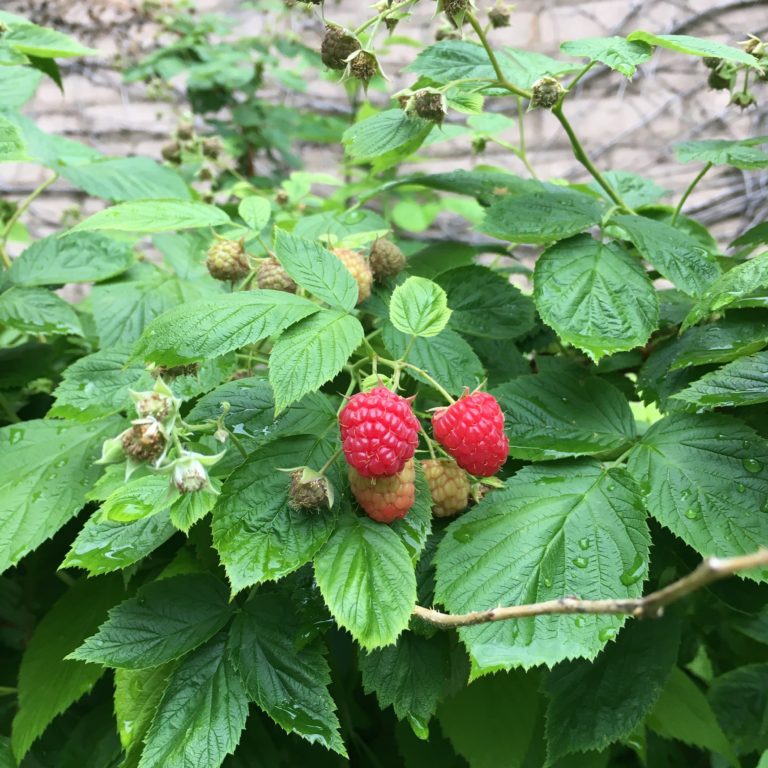
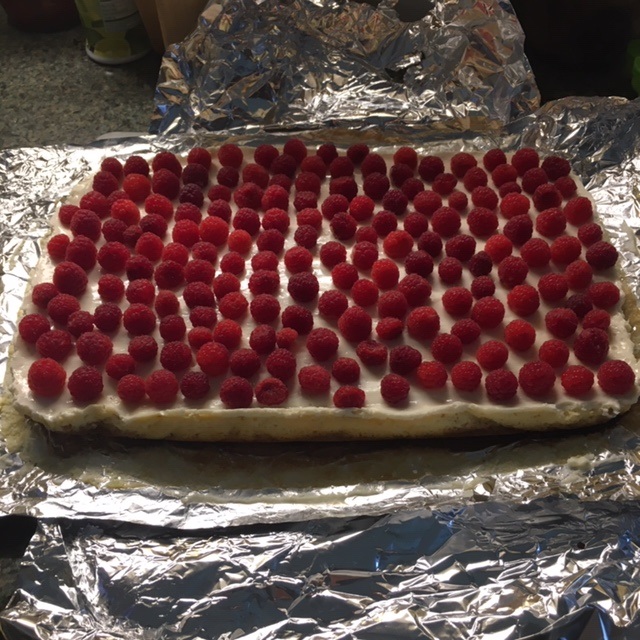
While not difficult to grow, raspberry bushes need seasonal maintenance or they’ll take over. The type I grow produce berries in the late-spring-to-midsummer on the previous year’s branches or canes. In the spring, I tie those old canes to the cables I use in an attempt to corral the bushes a bit and to distribute the weight more evenly. It also helps identify which year’s growth they are. As they flower and produce berries, new growth emerges in the spring and grows up through the old canes: another reason to tie them out of the way. As the older canes finish their production, the new year’s growth begins to flower and set berries that ripen in the late summer until the first freeze.
At this point, the older canes are done for good and should be pruned out. It’s not the most pleasant task but keeps the plants from becoming a tangled mess of unproductive canes. You can see how much came out this year in the last picture below; imagine not pruning and adding that volume each year that will never produce again. It’s easy to see how invasive it could become.
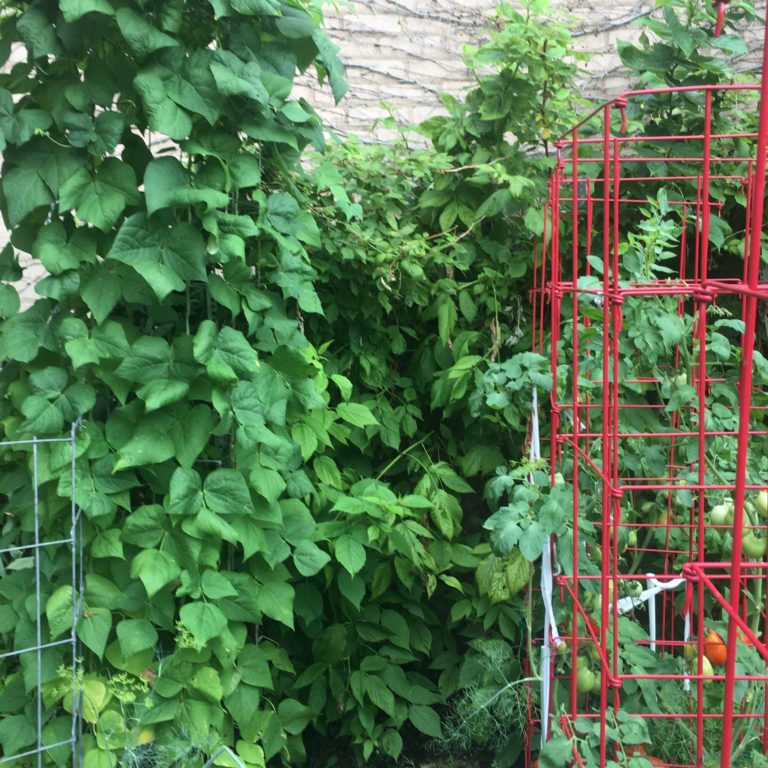
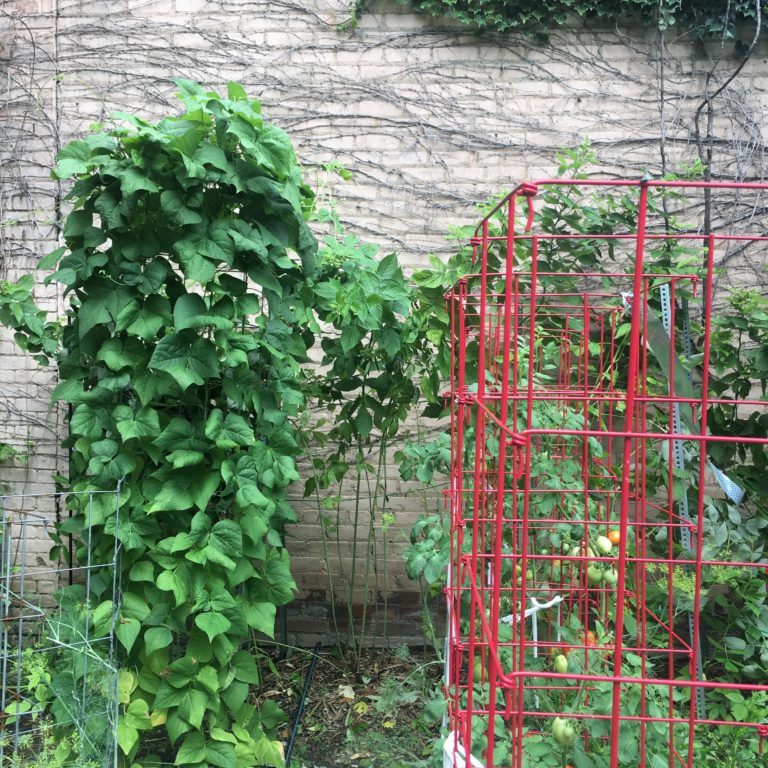
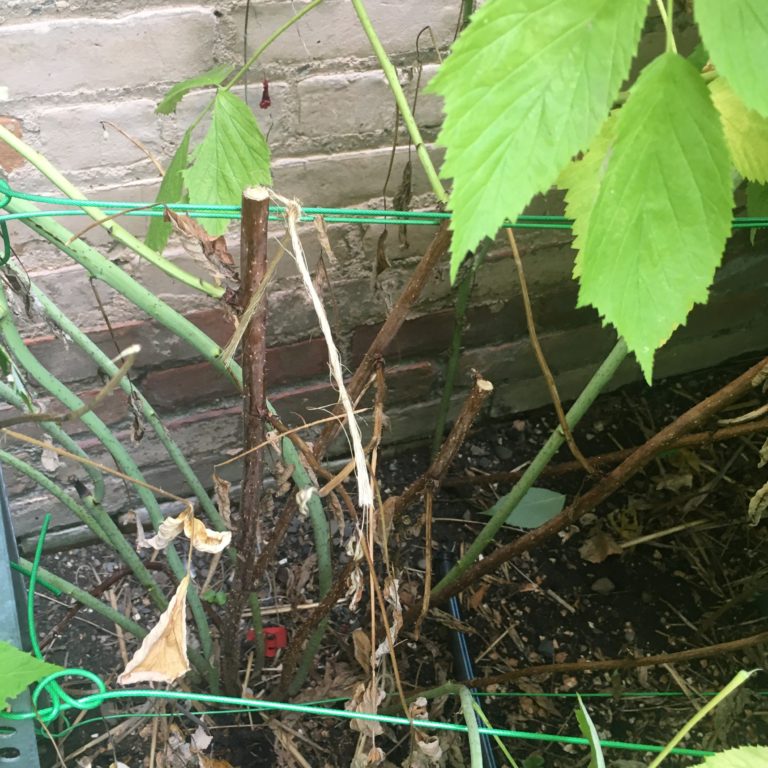
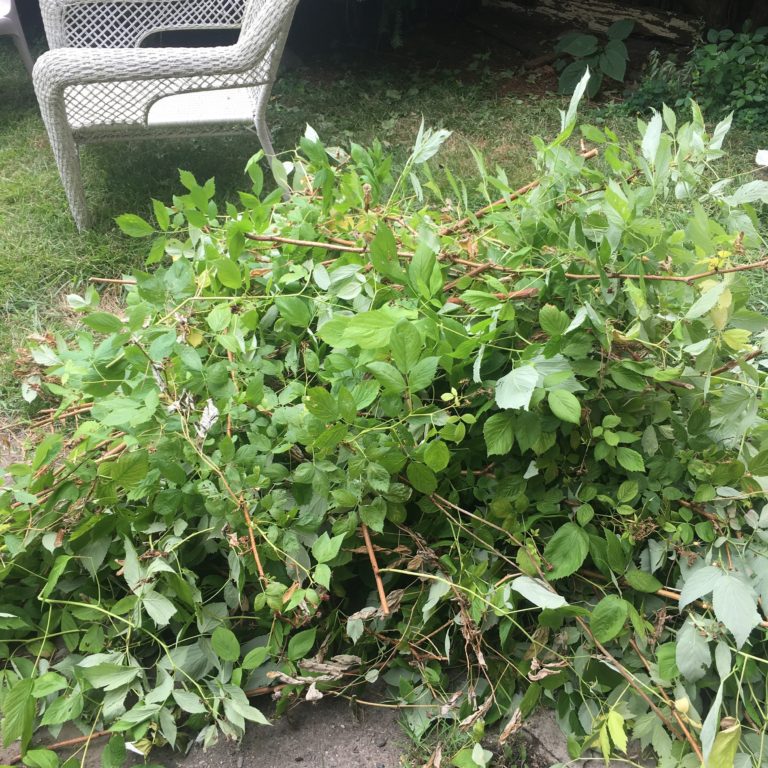
That brings us to about halfway through the garden so I’ll pick up next time with a banner year for tomatoes, eggplant, and peppers. Being in the garden and preserving its bounty in the kitchen doesn’t mean there wasn’t time for some knitting, sewing, and other needlework, and other projects, too—still so much to tell you!
Russell D McDowell
5 Oct 2020I love the anecdote about your neighbor, especially the talking to Mr. Bumble. It pays to be genial, I see. As we lucky beneficiaries of your green thumb will testify. You do a lovely blog, and so artfully wrought.
Handmade Bits and Bobs
6 Oct 2020I keep Mr. Bumble happy and he makes more goodies! Of course, I also reflexively apologize when I bump into Mr. Tomato so I guess my garden qualifies as a “safe space” for all!